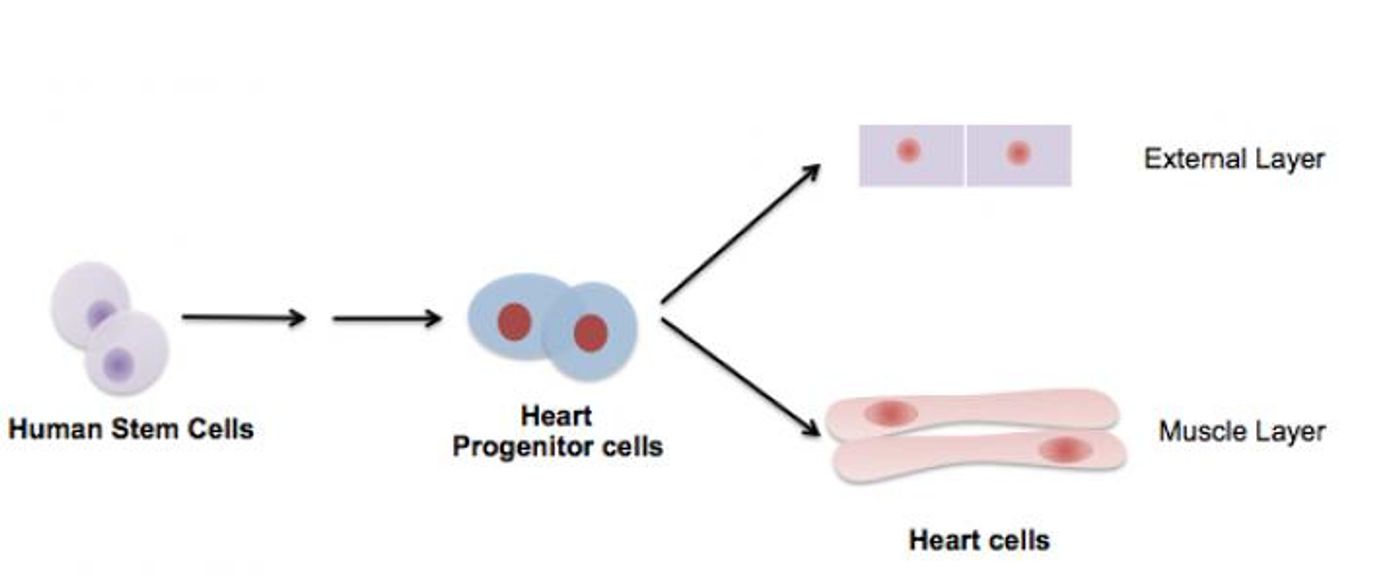Stem Cells Regenerate the External Layer of the Heart
There are three layers of the heart, and scientists from Penn State are working on using stem cells to recreate epicardium cells on the exterior, the muscular layer in the middle, and the endocardial cells from the innermost layer. Creating epicardium and other layers of the heart from stem cells is applicable to the clinic, like for patients who have suffered a heart attack and subsequent damage to the heart tissue.
"Heart attacks occur due to blockage of blood vessels," said the leader of the study, scientist Xiaojun Lance Lian, PhD. "This blockage stops nutrients and oxygen from reaching the heart muscle, and muscle cells die. These muscle cells cannot regenerate themselves, so there is permanent damage, which can cause additional problems. These epicardium cells could be transplanted to the patient and potentially repair the damaged region."
In 2012, the same research group from Penn State saw that when stem cells were exposed to chemicals that first activated and then inhibited the Wnt signaling pathway, the stem cells become myocardium muscle cells. In their newest study published in the journal Nature Biomedical Engineering, the researchers turned their sights toward pushing stem cells to become epicardium cells.
Myocardium muscle cells make up the middle of the three heart layers. These cells contract to push blood through the body, and the middle layer is thick and muscular. The Wnt signaling pathway is made up of smaller signal transduction pathways and proteins that transmit signals to cells via cell-surface receptors.
"We needed to provide the cardiac progenitor cells with additional information in order for them to generate into epicardium cells, but prior to this study, we didn't know what that information was," Lian said. "Now, we know that if we activate the cells' Wnt signaling pathway again, we can re-drive these cardiac progenitor cells to become epicardium cells, instead of myocardium cells."
Lian and his team developed a unique morphological assessment and functional assay. They designed the stem cells to become reporter cells, capable of expressing fluorescent protein when they became epicardium cells. "We treated the cells with different cell signaling molecules, and we found that when we treated them with Wnt signaling activators, they became fluorescent," Lian explained. The epicardium cells they created from the human stem cells were reminiscent of both epicardium cells developed by scientists in the lab and those from living humans.
In addition to generating the epicardium cells, the researchers also can keep them proliferating in the lab after treating them with a cell-signaling pathway Transforming Growth Factor (TGF) beta inhibitor. “After 50 days, our cells did not show any signs of decreased proliferation. However, the proliferation of the control cells without the TGF Beta inhibitor started to plateau after the tenth day," Lian said.
Lian said that the last piece of the puzzle is transforming cardiac progenitor cells into endocardium cells for the heart’s innermost layer. "We are making progress on that inner layer, which will allow us to regenerate an entire heart wall that can be used in tissue engineering for cardiac therapy," he said.
Source: Penn State










